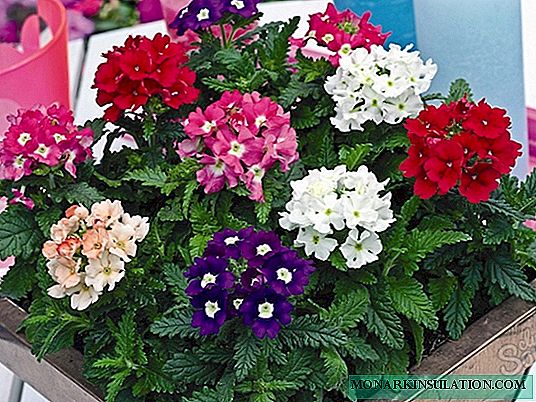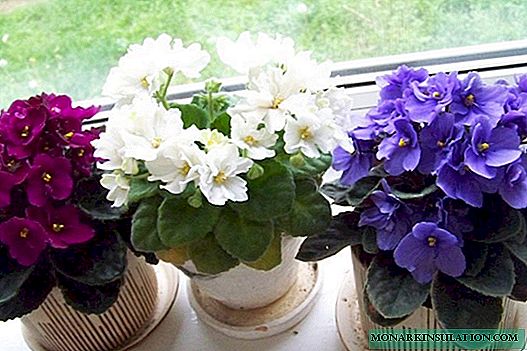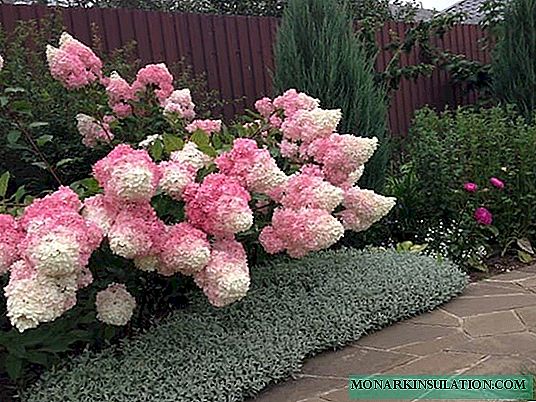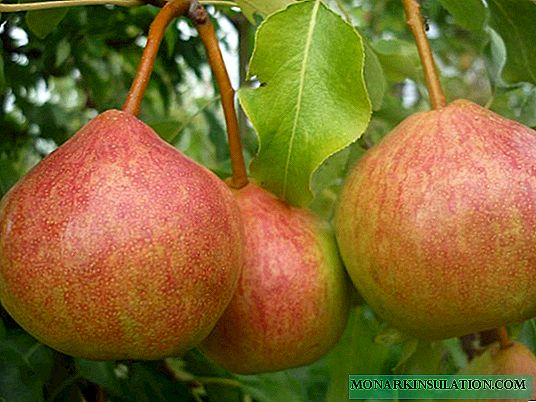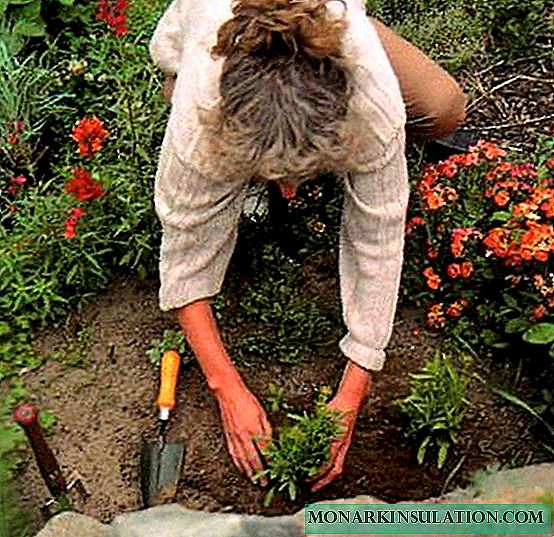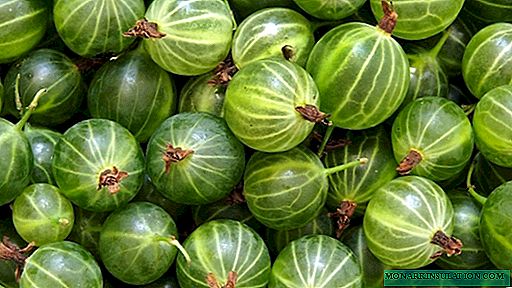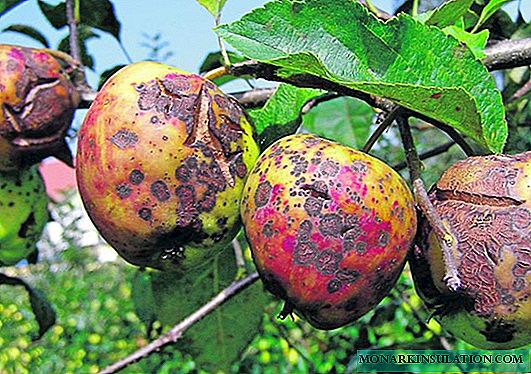
Apple trees often get sick, and diseases can be fungal, bacterial or even viral. And also there are many different insect pests that affect not only the fruits, but also leaves, shoots, bark and even roots. It is often difficult for a gardener to understand what kind of problem arose on the apple tree, what are the reasons for the lack of flowering or shedding of fruits. Helping to find the answer in any situation is our task.
Diseases of the apple tree: description, prevention and treatment
An apple tree has many possible diseases. They are mainly fungal, bacterial and viral in nature.
Moniliosis
Moniliosis affects all pome and stone fruits. It has two forms. The first is a monilial burn. Infection and the development of the disease occurs in the spring during flowering. The spores of the fungus enter the flowers with the help of bees and other insects. Leaves and shoots are also affected, which subsequently fade and blacken, creating the illusion of a burn.

Monilial burn affects the leaves and shoots of the apple tree
At this time, you need to cut the affected shoots, capturing 15-30 centimeters of healthy wood. After this, the crown is treated with fungicides (a group of drugs to combat fungal diseases). Horus helps well - it can be used even during flowering, as it is safe for bees. Concentration for spraying - 2 grams per 10 liters of water. Optimum temperature of application - + 3-22 ° C. Three treatments are carried out every 7-10 days. Further use of the drug this season will be ineffective, as it is addictive. The same applies to other fungicides.

Chorus can be used even during flowering, as it is safe for bees.
In the summer, moniliosis causes fruit rot. This usually happens during cool, rainy times. Affected fruits rot and fall. The active phase of the disease occurs during the ripening of apples. The decaying fruits must be picked off, collected from the ground and destroyed.

Fruit rot often affects apple trees in damp, cool weather
For treatment at this time, Strobi is considered the most effective drug. Its active substance, kresoxime methyl, quickly stops the course of the disease and blocks its further spread. The duration of the protective action is up to two weeks, the waiting period is three weeks. The concentration of the solution for processing is 2 grams per 10 liters of water.

Strobi quickly copes with Moniliosis and other fungal diseases.
Prevention of moniliosis and other fungal diseases is to perform the following simple tasks:
- Collection and destruction of fallen leaves in the fall.
- Deep digging of the soil of tree trunks.
- Cleaning the bark and whitewashing the trunks with slaked lime solution with the addition of 1% copper sulfate and PVA glue.
- Processing of crown and soil with a 3% solution of copper sulfate or Bordeaux fluid.
Rust
The fungus that causes the disease has a two-year development cycle - it develops on juniper for one year, and by autumn it infects apple and pear with spores, on which it will actively develop in the next season. In spring, small yellowish-green spots appear on the leaves, which by the middle of summer acquire a bright rusty-orange color. Nipple-like tubercles form on the underside of the leaves, inside of which are spores of the fungus. The disease is common in the Crimea and the Black Sea zone of the Krasnodar Territory, to a lesser extent observed in other regions.

By mid-summer, spots on the leaves become bright rusty orange
If possible, avoid joint plantings of apple and juniper and do not forget to carry out preventive work. Treatment is carried out with fungicides Horus, Skor (at an early stage), Strobi. The drug Abiga-Peak, which is a 40% solution of copper oxychloride, has proven itself well. It is used in an amount of 40-50 grams per 10 liters of water and the tree is sprayed 3-4 times with an interval of 15-20 days. For bees, it is low toxic; it does not accumulate in soil and fruits.

Abiga Peak - an effective domestic fungicide
Leaf curl
Curl of leaves is a rather dangerous disease. It is more common on peaches, but sometimes it affects the apple tree. The fungus activates in early spring, affecting young leaves. This happens if preventive treatments were not carried out in early spring. The leaves curl, become tuberous, curly. The disease spreads quickly, the branches become bare and the fruits stop growing. At this stage, the harvest cannot be saved already - you need to take care of saving the tree. For this, fungicides Horus, Abiga-Peak, Strobi are used. After stopping the spread of the disease, after a while, new leaves grow. To speed up this process, you need to feed the apple tree with nitrogen.

Curly leaves are more common on peaches, but sometimes affects the apple tree
Phyllosticosis (brown spotting)
With this fungal disease, small brown-brown spots form on the leaves. It differs from other similar diseases only by the name of the pathogen fungus. The consequences (wilting and falling of leaves, the appearance of spots on the fruits), preventive measures and treatment do not differ from the fungal diseases described earlier.

Phyllosticosis (brown spotting) is a fungal disorder
Soot fungus
This fungus does not appear on its own. It is preceded by the defeat of the apple tree by aphids or copper flakes. Both of these insects secrete a sweetish liquid, the so-called honey dew. It is a breeding ground for soot fungus. He, in turn, also releases excrement in the form of a grayish-white coating on the leaves and fruits of the apple tree. Over time, this plaque becomes black, and the affected parts of the plant look as if soiled with soot.

Sooty fungus appears as black plaque
Prevention of the fungus is the timely fight against these insects, and the treatment consists, as usual, in the treatment with fungicides (Horus, Skor, Quadrice, etc.). Before processing, it is advisable to wash off the coating with a strong stream of water from the hose. At the same time, parasitic insects are also washed off.
Fusarium
This is an insidious and dangerous fungal disease. It spreads and lives in the soil, affects the roots of almost any plant. Mushroom Fusarium can be in the soil for years waiting for favorable conditions. And the conditions are suitable for him: loose, breathable soils with an acidic or slightly acidic reaction, high humidity and a temperature of 25-28 ° C. Fusarium does not develop on heavy clay soils. But it is precisely these conditions that the gardener creates for his plants, including the apple tree. If infection occurs, the fungus affects the roots, they begin to hurt and die. And above the surface of the earth, the gardener observes wilting leaves, drooping shoots. Having decided that the tree does not have enough moisture or nutrition, it conducts watering and top dressing. And Fusarium, meanwhile, is rapidly progressing. It is especially dangerous for young trees, which can die in a season. Often, the disease destroyed plants in nurseries completely. As a rule, after detecting the disease, it remains only to uproot and burn the apple tree to save other plants. You can try to save the young plant by transplanting to a new place. They dig it out, examine the preserved roots, the patients are cut out and treated with fungicides. After that, it is soaked in a solution of the root stimulant (Kornevin, Heteroauxin, Epin, etc.) and planted in the ground.
Prevention of Fusarium apple trees:
- Careful adherence to agricultural technology. Strong and healthy plants are able to resist fusarium.
- The acquisition of seedlings only in reliable, proven places, nurseries.
- Deoxidation of soil with dolomite flour.
- Fighting insect spreaders fungus. These are aphids, whiteflies, spider mites, etc.
- Destruction of diseased plants.
Scab
The causative agent of scab - marsupial - is common in temperate zones. Wet and cold spring creates favorable conditions for him. Velvety spots of brown-olive color appear on the affected leaves. The stains on the fruits are hard, dark. The fruits themselves become small, acquire an ugly shape.

Hard, dark spots form on apples affected by scab
As additional preventive measures are recommended:
- Growing disease-resistant varieties.
- Prevention of thickened landings.
- Maintaining the crown of the tree in a ventilated, well-lit condition by timely thinning trimming.
To combat the disease, fungicides are used, as well as numerous folk remedies.
Black cancer
A healthy and strong tree is rarely affected by black cancer. It usually occurs on weakened plants in bark cracks and frost holes. More often this disease affects trees growing in the southern regions. Twigs, leaves, flowers, fruits can be affected. But the most dangerous is the defeat of the tree bark. First, brown spots appear on it, the crust cracks, becomes covered with tubercles, blackens. After some time, the affected pieces of the bark begin to break off. Naked wood looks charred. If you do not take measures, then after 3-4 years the tree will die.

The most dangerous defeat of black cancer of the bark of a tree
Timely treatment consists in cleaning the affected areas to healthy wood, disinfecting wounds with a 3% solution of copper sulfate or other fungicides, covering them with a protective layer of a garden var.
Bacteriosis (bacterial burn)
This disease came to Russia after 2009 from Europe. It is observed in the Kaliningrad region and in the southern regions. It is carried by insects, birds, wind. It penetrates the plant through flowers or through damage to the leaves, bark. It spreads throughout the plant through sap conduction channels. Moniliosis, damaging plant tissue, promotes the penetration of bacteria. Often these two diseases occur simultaneously. Characteristic signs of bacteriosis:
- Reddish spots between leaf veins.
- The ends of young shoots die, and they themselves fade. The phenomenon spreads from top to bottom, sometimes rapidly.
- White discharge appears on the cortex, which subsequently darkens. The bark becomes sticky, wet.
- Buds and flowers dry out, die off, but remain on branches. Their color becomes dark brown.
- Fruits are first covered with sticky secretions, then mummify, blacken. Remain on the branches for a long time, sometimes more than a year.
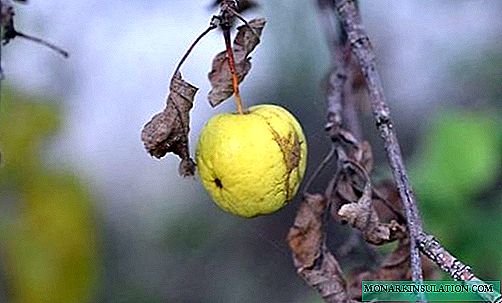
With bacteriosis, the leaves and shoots blacken, fade
Mummified fruits are a refuge for the wintering of bacteria, so they must be carefully collected and destroyed. Do the same with other affected parts of the plant. Damaged bark is peeled to healthy wood and treated with antibiotics, then covered with garden var. Antibiotics are also used to spray the crown during any growing season. The following drugs are usually used:
- Ampicillin - one ampoule per 10 liters of water.
- Fitolavin - 20 ml per 10 liters of water.
- Gentamicin - one ampoule per liter of water. Used for the treatment of wounds.
- Ofloxacin - two tablets per 10 liters of water.
At the same time as the treatment of bacteriosis, fungicides should be used to combat possible fungal diseases.
Viral diseases
Such diseases are caused by viruses that develop in the cells of living plants. They are distributed with plant sap by various sucking insects and mites, as well as when performing operations on a tree - vaccinations, pruning, pinching - with a non-disinfected tool. On many healthy trees, the virus may be in a latent state (i.e., in a latent state that does not manifest itself before favorable circumstances). When the tree is weakened due to freezing, damage by fungi, pests, lack of moisture and (or) nutrition, the virus activates and infects the plant.
Chlorotic leaf spot
On the apple tree, the manifestation consists in the formation of a yellow-green mosaic, ring patterns in the form of spots or lines. Possible necrosis (death) of the edges of the leaves. Mass infections are observed in Crimea, Moldova and Ukraine. The virus causes ring brown spotting on leaves and fruits, reduces yield by 20%.

Chlorotic spotting virus infects weakened plants
There are no drugs to combat the viral infection of the apple tree. Therefore, one should rely on the observance of agricultural technology of culture, the implementation of preventive measures against fungal diseases. They will also be the prevention of viral diseases. A virus cannot harm a healthy, strong tree.
Pests of apple trees
The apple tree has quite a few pests. Let's get acquainted with the main ones.
Table: The main pests of the apple tree
| Pest | Signs of defeat | Prevention and control |
| Apple moth | Fruits are wormy, small, crumble | It is impossible to deal with caterpillars that have penetrated the fruits. During the flight of butterflies (May-June), a cycle of three treatments with insecticides (a group of drugs for controlling insects) is carried out - Decis, Fufanon, Spark. Prevention is the same as against disease. In addition, from crawling caterpillars onto the crown, hunting belts mounted on tree trunks help. |
| Gall aphid | Twisted leaves, inside which, as well as at the ends of young shoots, pest colonies are observed | When aphids appear, they tear off and destroy twisted leaves, the crown is treated with insecticides. Hunting belts will prevent ants from entering the tree, which carry aphids there. |
| Apple-tree coppers | It is a small (up to three millimeters) insect that can fly and jump. It feeds on the juice of leaves, shoots and fruits. Affected apples stop growing, become hard, stony, crumble. | Timely insecticide treatments solve the problem. Before flowering, use the Commander, Decis. After flowering - Spark, Spark Bio. And also attracted to the site of natural enemies are copper flocks - ladybugs, lacewings, ground beetles. To do this, marigolds are planted near the apple tree, the smell of which these beneficial insects love. |
| Apple Scale | This small insect (up to 1.5 mm long) hides on a tree bark under shields up to 3 mm long. It feeds on the juice of young bark, leaves and fruits. | Treatments with contact insecticides do not bring results, since they do not penetrate the shields. A greater effect is achieved by cleaning the bark with metal brushes, after which the surface is washed with a solution of laundry soap with the addition of soda. Sometimes it’s easier to cut and burn a heavily affected branch. |
| Leaflet | Caterpillars feed on leaves, while they twist into a lump of irregular shape, covered in a cobweb. Fruits can also be damaged by gnawing fossae and grooves on their surface. | Twisted leaves break off and destroy. They are treated with insecticides, as well as folk remedies - infusions of wormwood, tobacco, potato and tomato tops. |
Photo gallery: the main pests of the apple tree
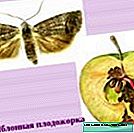
- The nodule moth deals great damage to the crop

- Leaves affected by the gall aphid need to be cut off

- Apple thistle feeds on the juice of leaves, shoots, fruits
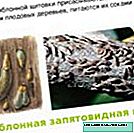
- Scaffold is hard to detect on a tree

- Leafworm eats leaves
Apple tree treatment for diseases and pests
For preventive treatments of apple trees, fungicides, insecticides and folk remedies are used.
Table: processing apple from diseases and pests
| Processing time | A drug | Against whom is the action directed | Dosage | Processing Intervals |
| Early spring | BOTTOM | All known fungal diseases and pests | 50 grams per 10 liters | Once every three years |
| Nitrafen | Concentration 3% | In other years | ||
| Copper sulfate or Bordeaux liquid | Fungal diseases | Annually | ||
| Before flowering | Decis, Fufanon, Commander | Pests | According to instructions | |
| After flowering | Spark, Spark Bio | Annually during the season with an interval of 2-3 weeks | ||
| Horus, Skor, Abiga Peak | Fungal diseases | |||
| Late fall | Copper sulfate or Bordeaux liquid | Concentration 3% | Annually |
FAQ
In the process of growing apple trees, gardeners often have situations that go beyond the normal development of the plant. We will try to understand the causes of the most common problems.
Why the apple tree does not bear fruit and does not bloom
This problem may have several causes.
- If this is a young tree, perhaps the deadline for fruiting has not come. Some varieties come into this season in the 7th-9th year after planting.
- A non-zoned seedling was purchased. The conditions of the region do not suit him, the tree directs all forces to survival. Their fruiting is no longer left.
- The same situation occurs when a seedling is planted in an inappropriate place - swampiness, close occurrence of groundwater, alkalized, saline, too acidic soils.
- Inadequate or unbalanced diet. For example, an excess of nitrogen, a lack of phosphorus and potassium.
- Damage to the buds by the flower beetle.
- Freezing of flower buds.
Why do apples rot on a tree
Rotting apples on a tree are the result of a disease of moniliosis, scab, and bacteriosis. And also the most common cause of the problem is the attack of pests - the codling moth, thistle, and flower beetle.
Video: fruit rot
Black rot on the apple tree
The probable cause is black cancer, bacteriosis.
Mold (fungus) on the apple tree
Such a problem often appears in thickened, shaded, damp places. Moldy formations appear on the bark of the tree. They can be fungal in nature. In this case, the fungus can grow into the bark, destroying it. No matter what the fungus is called, the actions are:
- It is necessary to clean the bark, cut the damaged areas to healthy wood.
- Treat the wounds with fungicides - 3% solution of copper sulfate, 3% solution of Bordeaux fluid, Abiga-Peak, etc.
- To apply a protective layer of a garden var.
But often mosses and lichens are similar to mold. Tree bark for them is only a platform for living. With the same success, they can live on a stone. Mosses and lichens have no roots and they do not damage the bark. The phenomenon is undesirable, but not fatal. Scrape them with wooden scrapers, trying not to damage the bark. A film, paper, fabric, etc. are pre-spread on the ground. Then it is washed with a 1% solution of copper sulfate and whitened with a lime solution.
Prevention of the problem:
- Avoid thickened landings.
- Do not allow the garden to overgrow with weeds.
- Regulatory crown trimming is carried out annually.
- In autumn, the bark of trunks and thick branches is cleaned and whitened with a lime solution.
Why do apples fall?
This is a fairly common phenomenon that every gardener has encountered at least once. Apples can fall at different stages of development - from the ovaries to fully ripened fruits. There may be various reasons for this:
- Lack of moisture. In this case, first of all, the tree gives it to the leaves, taking it from the fruits that fall.
- Excess moisture prevents oxygen saturation of the roots. As a result, the process of nutrition of the fruits is disrupted.
- Lack of phosphorus and potassium can also cause apples to fall. It is necessary to observe a balanced diet.
- Excess nitrogen makes the fruit loose, part of them falls off.
- Natural normalization of the crop. With abundant flowering and the formation of ovaries, only 5-10% of their apple trees are able to grow, and dumps excess ones. This is normal.
- In some varieties, fruits that have reached mature ripeness fall. The gardener must know this feature and promptly harvest.
- Defeat by pests, for example, the apple moth.
Why do the leaves of the apple tree turn yellow
The possible causes of this phenomenon are diverse:
- The tree is planted in a flooded, swampy place, or the gardener overdid it with watering. With an excess of moisture, the leaves begin to turn yellow from the top of the tree.
- When planting, the root neck was deepened - the result is the same.
- Lack of nitrogen - leaves begin to turn yellow starting from the lower tiers.
- Lack of zinc, magnesium, iron, sulfur. A quick effect in such cases gives spraying with solutions of complex fertilizers containing these elements.

The lack of various micro and macro elements causes yellowing of leaves
- Hot weather and lack of moisture.
- Damage to the roots of moles.
- Fusarium
Red spots on the leaves of the apple tree
The appearance of red spots on the leaves may indicate infection with rust or scab, as well as damage by the gall aphid. With a lack of potassium, the edges of the leaves can redden. Magnesium deficiency causes reddening of the interstitial space.
Brown spots on the leaves of the apple tree
Such signs may indicate infection with phylostictosis (brown spotting). In addition, copper deficiency is possible, but this is unlikely if the gardener regularly processes the crown with solutions of copper sulfate or Bordeaux fluid. Another option is a leaf burn as a result of irrigation in hot sunny weather. In this case, drops of water on the leaves play the role of lenses that enhance the effect of sunlight.
The leaves of the apple tree turn red and curl
Most likely, the apple tree is affected by the gall aphid. This is easy to verify - just turn the curled sheet. If there are no aphids in it, perhaps this phenomenon is a consequence of a deficiency of phosphorus, magnesium or manganese. And also the barrel could be heavily transmitted when installing a hunting belt, which limited the power of the crown.
Black plaque on apple tree how to fight
As a rule, black plaque is the excrement of sooty fungus. It can also be symptoms of bacteriosis or black cancer. Ways of struggle are described above.
Why did not the leaves fall on the apple tree in autumn
This phenomenon is not harmless - it can cause a decrease in winter hardiness of a tree, productivity and life expectancy. There may be several reasons:
- The tree is overfed with nitrogen in the second half of summer or in autumn. This causes a new wave of leaf growth, which simply does not have time to ripen.
- Excessive watering or too rainy autumn. It should be remembered that pre-winter water-loading irrigation is needed once, in late autumn. But the rest of the autumn time after harvesting the tree does not need watering.
- Unregulated apple variety. If you plant a southern variety in the Middle lane, then such a tree does not have time to complete the vegetation by winter.
Spring frosted apple tree leaves
If only the leaves froze - it's okay. New ones will grow. Significantly worse if wood is damaged. This usually manifests itself in the fact that the tree woke up late after the winter, then it seemed to be restored, but the leaves became small and grow back later than usual in the spring. The effects of freezing occur over the next 3-4 years. Check the degree of damage by slicing weak branches. Dark areas in the section indicate frost damage in these places. The affected areas can no longer recover, but with proper care, the tree can live another 6-8 years. During this time, you can grow a new apple tree. By proper care is meant anti-aging pruning, reinforced watering and top-dressing of the tree.
What is the tops on the apple tree
Spinning tops are highly fattening vertical shoots. The leaves on them are always very large, rarely located. There is never fruit on such shoots. Spinning tops take away food from a tree therefore are subject to removal. They appear after trimming the tree too much. If necessary, some spinning tops can be made fruit bearing. To do this, they are cut to two to three kidneys. From the second-order branch, a new fruit branch can be formed. Such branches need to be bent to a horizontal level, since vertical ones never bear fruit.

Spinning tops are highly fattening vertical shoots
Treatment of a black hollow in an apple tree
A black hollow is formed on an apple tree as a result of a disease of black cancer. For its treatment, first you need to thoroughly clean the hollow of dead wood and bark. To do this, you may need various tools - a knife, a chisel, a drill with a wire nozzle, etc. Before starting work under a tree, spread a film or other suitable material to collect all the waste that is removed. After the operation, they must be burned, as they are a source of infection.
After cleaning the hollow, it should be disinfected with a 2% solution of copper sulfate and allowed to dry for several hours. The surface of the hollow is covered with a layer of a garden var, prepared on the basis of natural ingredients (beeswax, lanolin). You can’t put in a hollow a garden var from petrolatum or with the presence of other refined products as part of other products. At the end of the operation, the hollow is filled with mounting foam. Previously, cement-sand mortar was used for these purposes, but modern materials give better results. After 2-3 days, the excess foam is cut with a sharp knife.
Video: super putty for the treatment of slices, wounds, hollow
It is safe to say that most of the problems associated with diseases or pests of apple trees, the gardener receives due to non-compliance with basic preventive measures. Other problems occur due to non-compliance with agricultural technology, improper selection of varieties and choice of planting location. With a proper systematic approach to growing an apple tree and caring for it, you can always count on a decent result.








